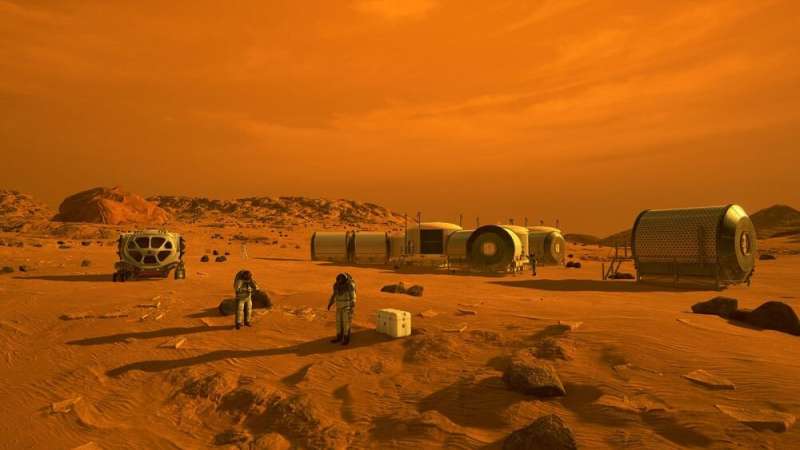Where are the best places to land humans on Mars?

Want to go to Mars? Great, now all you need to do is plan a mission. Figure out where to land, what to bring, and how you're going to live there in the months (or years) between favorable return windows. All this will be determined by the availability of crucial resources you'll need to survive.
This is going to sound like a travel brochure, but the red planet offers so much to check out for a first human mission. There are canyons, plains, craters, volcanoes, and polar regions. So, where do you start first? It'll depend on what sort of mission you want to accomplish. A simple "plant boots and the flag" trip won't require a lot of infrastructure.
A more complex mission is going to need more infrastructure for habitats and science stations. Essentially, you'll land, build a habitat, explore the near neighborhood, establish a science outpost, and survive the radiation and environmental challenges of Mars. Your Mars "to-do list" includes bringing supplies and building materials to get started. Then, you need to think about survivability, building up your outpost, doing exploration, and—crucially—having a launch site for a return to orbit and back to Earth.
Figuring out where to go on Mars is a mechanical and planetary puzzle with a lot of moving parts. And, humans have never launched a long-term crewed mission to another planet in history. So, it's all new to us.
Mars pioneers need everything
Traditionally, humans have moved around our own planet Earth searching for new places to explore and live. Early settlers and explorers moved into new regions prepared with some supplies. However, they could always rely on local sources of food, water, and shelter, too. Not so true on Mars for the first explorers. They'll have to bring everything they need (at first), including air, water, food, and machines to help extract local resources for ongoing habitation.
Clearly, water is the most important. Without it, you won't get to stay very long or get much done. Mars doesn't have any flowing across the surface. But, it does have hidden resources. First, there are obvious ice deposits at the poles, including supplies of water ice. Second, there's a lot of water ice hidden beneath the surface. Third, there are hydrated minerals. Of these three choices, getting water from hydrated minerals will be the most difficult. These have water locked away inside, like clays. You'll need specialized machinery to extract that water. Drilling for subsurface ice might be easier in the short term. Solving the water access problem gives you resources for growing food, having a drink, and manufacturing and propulsion. So, pick a site with good water access.
The landing site should ideally be at a low altitude (better for human habitation) and not be a dust pit. That stuff on Mars is finely ground and incredibly toxic with perchlorate compounds. It will get into everything (not good for machines) including human lungs (not good for health). The dustier a landing spot, the harder it will be to accomplish a useful mission and keep the humans safe.

Power to the Martians
Okay, so you've got a site near water resources, it's dry but not too dusty, what else do you need? Power. Your habitats, machinery, and vehicles are going to need juice. Solar power might seem to be a good choice, and it is in use now on the landers and rovers currently in place. If you want to maximize solar power, you'll land near the equator, where days are longer and you get more sunlight. However, you'll probably also want to bring along some sort of nuclear power device. It's not subject to changes in the weather and is a long-term, steady source.
Another advantage of near-equatorial landing sites is higher average temperatures. Mars is a cold place, even on the warmest days. Near the equator, temperatures can get as high as around 20°C (70° F) and a minimum of -73° C (-100°F). Land a little farther north, in the mid-latitudes, and you could face temps as low as -148 F (-100 C) during the winters. And, forget about the poles for long-term habitation. They'll be much colder, year-round. Remember that you want to live safely and keep your equipment warm, so the equator makes a lot of sense. You'll get more solar heat there and save on your fuel usage.
Moving around Mars
So, you end up near the equator, but you want to explore the rest of the planet? That requires vehicles and those require fuel and maintenance. There's a lot of talk about using in-situ resource utilization (ISRU) not just to get water to drink, but to make fuel. And, advanced ISRU facilities should allow Mars inhabitants to cycle surface rocks (clays, for example) for water and other materials. So, the availability of useful surface materials (and water) will dictate your exact landing site.
Eventually, once you've established a home on Mars, you'll want to get out there and science the you-know-what out of Mars. You'll be studying the climate, and geology, and maybe looking for evidence of ancient (and probably long-gone) life. The first study areas will be right near your landing site since they'll be easy to get to. But, eventually, scientist-explorers will head to distant places, like Valles Marineris, the Jezero Crater site, the volcanoes, and eventually the poles. Those targets will require more power and more resources.
What about leaving the planet?
At some point, humans will want to get back to Earth, maybe bring back samples to waiting labs, visit relatives, bring other Marsnauts onboard, and so on. How do you get off the planet once you've been there a while? You could bring along fuel for your launch to Mars orbit. That's likely what the first mission or two will do. But, dragging fuel in and out of a gravity well (even one as light as Mars's) is costly. You can solve some of that by making your own fuel on-planet.
If your landing spot is near the equator, you can take advantage of the planet's spin rate there to give the launch vehicle a boost into space. That'll give you some fuel savings. For longer-term missions, you'll be making fuel from local resources, but you'll still want to economize on fuel usage.
So, it looks like for all criteria, landing near the equator is going to be the best choice, particularly for a first human "landfall on Mars." And, that's what mission planners are thinking about now, for real, in every space agency and a few corporate offices around the world. It's a complex undertaking. Selecting a site is the first order of business, and as you can see, it's not simple. Ultimately, the best spot for humans to land on Mars will be as safe and resource-rich as planners can select. Then, it's up to the humans who go there to make it all work—and show the rest of us the wonders of the red planet.
Provided by Universe Today





















